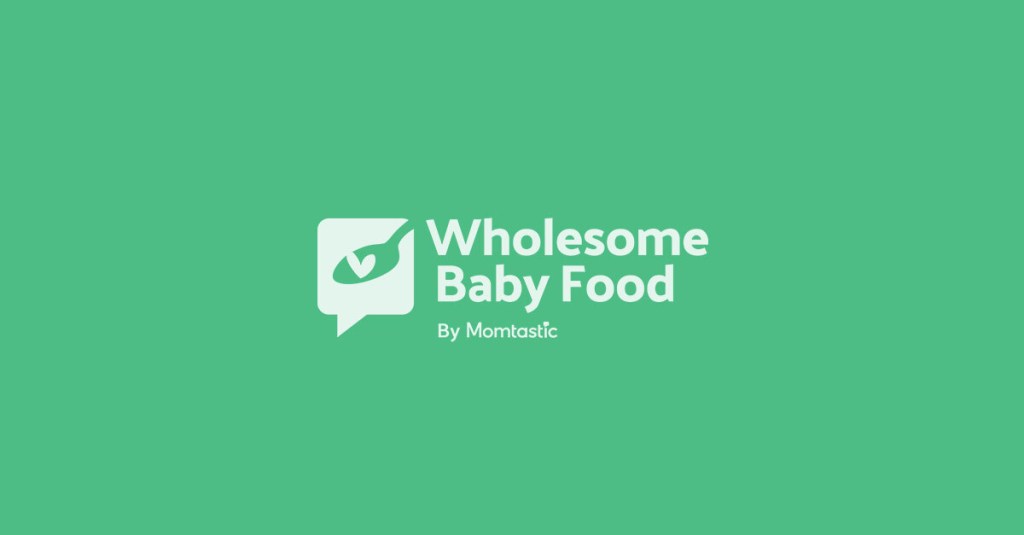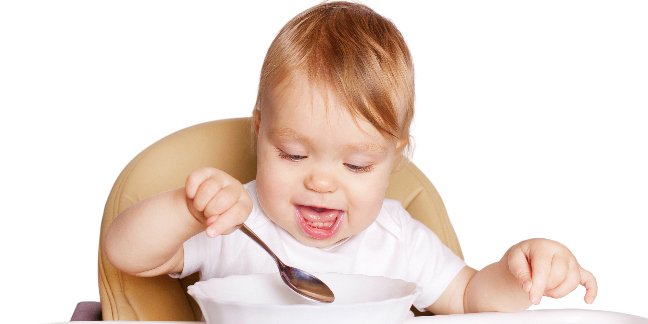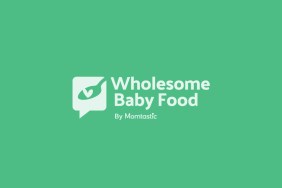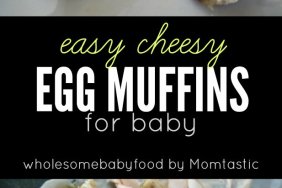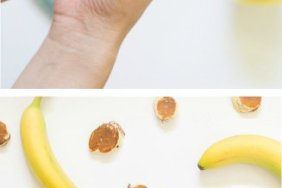Making Healthy, and even Organic, Baby Cereal is very easy!
Parents have a lot of questions concerning making Homemade Baby Cereal. On this page we answer the most frequently asked questions concerning how to best prepare Homemade Baby Cereal.
This page outlines many commonly asked questions about making, storing and preparing grains for baby cereal and baby foods. We have outlined the questions below .
If you do not see your question here, please contact us. If we cannot answer your question about Homemade Baby Cereal, we will point you in the direction of someone who may. We are always eager to add information to this site. The more information that we have based on your questions, the more informed our visitors will be.
![]() Did you know that baby’s first food does not have to be a commercial infant rice cereal?
Did you know that baby’s first food does not have to be a commercial infant rice cereal?
Many pediatric resources are acknowledging the fact that avocado, banana and sweet potato make great first foods for baby. We prefer fruits and veggies first. Ask Your pediatrician about fruits and veggies instead of cereal. Read Rice Cereal Can Wait to learn about the new thinking from the AAP.
Homemade Baby Food – Baby Cereal FAQs – Click to Learn More
Do I Have to Feed my Baby “Baby” Cereal? Can I Just Skip the Cereal?
“Rice cereal is a less than perfect choice for the first complementary food given to infants. Rice cereal is low in protein and high in carbohydrates. It is often mixed with varying amounts of breast milk or formula. Although most brands of formula now have added iron, zinc, and vitamins, iron is poorly absorbed—only about 7.8% of intake is incorporated into red blood cells.” Dr. Frank Greer – Read Rice Cereal Can Wait to learn about the new thinking from the AAP.
You CAN skip cereals altogether if you want to. Many sources now recommend beginning a baby with fruits or an orange veggie like sweet potato as first food(s). Studies are now revealing that grains may not be good starter foods for baby to digest. Starting with a fruit like avocado or banana or a veggie like sweet potato is a great alternative to cereal(s).Many pediatric resources are acknowledging the fact that avocado, banana and sweet potato make great first foods for baby. We prefer fruits and veggies first. Ask Your pediatrician about fruits and veggies instead of cereal.
There is no medical need to start baby out with cereals; unless your pediatrician has indicated your baby may need extra iron due to less than overall good health or due to being pre-term.
In this instance, you should use a fortified commercial infant cereal and consult with your pediatrician on the best foods to offer as “first” foods; you may be surprised to hear your pediatrician recommend adding meat to baby’s diet!
Can I Fortity Homemade Baby Cereal With Iron?
You will not be able to “fortify” homemade baby cereals the way commercial cereals are fortified.
There are many things you may add to the cereals that will give an “iron boost” such as formula, breast milk, wheat germ, and brewer’s yeast. Once you have introduced fruits and veggies along with the cereals, you will get Vitamin C which helps to aid in the absorption of iron.
Many infants have been raised on homemade cereals/baby foods and they have never suffered iron deficient anemia nor have they needed additional vitamin/mineral supplements. This is something that you should discuss with your baby’s pediatrician as there may be a medical need for iron fortified cereals and/or iron supplements. See our Iron Information page for resources and more information.
What is the Easiest Way to Make Homemade Baby Cereals?
The easiest way to make your own cereals is to grind up the grains on your own. You may take Rice, Oatmeal, Barley etc and use a blender or food processor (or even a coffee grinder*) to grind the grains into a powder.
This powder then becomes your baby cereal. Cook this powder for 15 minutes until a thin soupy consistency is achieved.
If you do not want to grind grains for homemade baby cereal, you can cook the grains and then puree them. The only issue with pureeing cooked grains is that they may become pasty. Rice that is pureed is a grain that most often tends to become pasty. If you will be pureeing cooked grains, do it slowly and add liquid slowly. Be sure to keep a close watch as you are pureeing so that you don’t wind up with a paste.
Visit our Cereal Recipes page for healthy baby cereal options.
Why is Commercial Baby Cereal so Pasty and Soupy; What’s it Made From?
Commercial single grain cereals are made from grains such as rice, barley and oat. The grains used are refined grains.
The process of refining takes out the Bran and the Germ (the most nutritious parts), leaving the Endosperm.
You see, removing the germ and the bran allow grain products to stay on the grocer’s shelf longer. That’s not really a comforting thought when you realize that the box of baby cereal you may purchase might have been on the shelf before your baby was even born. While the refining process does strip away many nutrients, these nutrients are added back in after the milling of the grain. Many commercial cereal products offered to baby are fortified with iron and typically contain further additives.
Commercial baby cereals are also precooked and dehydrated. This is best exemplified when you mix up some commercial cereal and find a pasty substance in the bowl. Many commercial baby cereals are whole grain and are made with whole grain flour. However there is nothing more pure and whole as buying whole grains and making them into baby cereal – 100% pure whole grain.
Do I Have to Cook the Cereal Powder that I Grind?
You need to cook the rice/oatmeal/barley or other grain “powder” prior to serving because when you make your own cereal(s) you are taking a whole grain and grinding it into a powder. This powder should be cooked because the grains were not cooked prior to your processing them into a powder. This powder would not be easily digested if left in its “raw” state.
Why Doesn’t Commercial Baby Cereal Have to be Cooked?
The reason that you don’t “cook” commercial baby cereal is that commercial baby cereal is precooked and then dehydrated. Commercial baby cereal is most often made from grain that has been processed and then milled into a flour. You notice this difference when you dump out some “flakes” of commercial cereal(s) and also when you mix up some commercial cereal and find a thin pasty substance in the bowl.
Can I Use “Quick Cook” Cereals?
Instant and Quick cooking cereals are oftentimes processed, precooked and (as with Instant) then dehydrated. This processing has in the past included the addition of enzymes. Additionally, Instant Oatmeal may contain other flavorings as well as salt. Many manufacturers maintain higher standards, use only whole grains and do not steam or further cut and process their Quick Cook oat products. Indeed, many manufacturers do not even produce Instant grains due to the nutritional inferiority.
Quick cook oats tend to be less nutritious as they tend to be rolled, cut and then steamed. Some producers will additionally further “cut” or flake the oats. Unless one researches the producer of the grain, one cannot be certain that the Quick Cook oats they are eating have simply been rolled and finely cut. We like to purchase our Grain products from Bob’s Red Mill or Hodgson Mills here in the U.S. Their websites are very informative and contain a plethora of information concerning all types of grains.
Can I Freeze Homemade Baby Cereal?
Yes, you may freeze homemade cereal. You would use the ice cube tray method (or whatever method of freezing you currently use) as you would for other baby food purees. It tends to be easier to grind and then store the uncooked grains and simply cook a day’s worth as you go. It often happens that when you thaw the cereal, it becomes rubbery and does not reconstitute well. We do hear from parents who have great luck in freezing cereal. You may want to try freezing a few portions and see how it works for you.
What Type of Rice Should I Use to Make Homemade Rice Cereal?
The type of brown rice that you would want to use for cereals would ideally be a short-grain brown rice. Short-grain rice cooks up more soft than does long or medium grain rice. The only caveat is that it may become sticky and “pasty” when pureed so keep an watch over the rice when cooking and pureeing/blending it.
You may use a blend of any type of rice that you like; ensure that it is whole grain however. Brown jasmine rice and plain brown rice make a nice blend for cereals as do basmati and plain brown rice.
If you find that your baby does not like this blend, then consider switching to the plain brown rice type until the palate has become used to solid foods.
Could my Baby be Allergic to Rice Cereal?
Rice in particular is not a known “high” allergen in the US and most Western Countries and this is why it is typically recommended as an infant’s first food (in the US that is). If there is a rice allergy, studies show that the allergy is most often to the pollen of the rice and a reaction is triggered by the inhalation of the pollen – rice is a grass and may produce hayfever like symptoms. Rice pollen has been know to cause allergies in those that live around rice fields.
Typically, if one is allergic to rice, then there will be sensitivities shown to other grains such as oats, barley, wheat and rye to name a few. Rice may cause diarrhea in those that are sensitive to it however it is rare.
You will find that the early commercial Rice products offered to baby are fortified with iron and typically contain further additives. Commercial baby cereals that contain rice are typically of the “mixed” ingredient nature and may contain items such as soy and starch. Infant jar foods that contain rice may contain items such as soy, modified corn starch, tapioca etc.. It may be that in the beginning, your baby had a sensitivity to something contained within the cereal or the jar that was not directly related to the rice.
One thing to go through is a list of things that may have changed within your household around 1-2 weeks prior to the suspected reaction. Is your baby showing signs of illness such as a cold or congestion, have you added any other items to baby’s diet, have you changed brands of a particular food in baby’s diet and so on.
If you feel comfortable, wait until the reaction has passed and then try to introduce the rice again, ensuring that no other changes occur in baby’s diet. You will be better able to ascertain a true rice “reaction” this way. As always, we recommend that you contact your pediatrician and discuss this him/her especially if the reaction time becomes lengthy.
Can I Store the Rice “Powder”?
Whole grains may be stored for several months in a cool dry place. If the temperature becomes extremely warm in your home, you may wish to store the grains in the refrigerator. Milled whole grains, such as rice flour, whole wheat flour, oat flour and the like, should be stored in an air tight container and preferably in your refrigerator. You can store them in a cool dry place however ensure that you check on the status of the grains if you use them infrequently.
Since these are whole grain flours, the natural oils that come from the grain may become rancid without refrigeration.
When purchasing any type of milled whole grain, it’s always best to buy smaller quantities to ensure that your whole grains are used prior to them going rancid. The same “rules” apply for to rice powder or oat powder, barley powder etc. that you have ground (milled) for your homemade baby cereal. You should store it in an air tight container, in a cool dry place but preferably in the refrigerator if your home is warm.
Is it Safe to Feed my Baby Granola?
A vast majority of granolas contain nuts and honey. Nuts and honey are not allowed until after 2 years old and 1 year old respectively.
If you are going to give granola, read the labels very carefully. Granola, like any other “cereal” may be ground up in a blender/food processor and served to baby mixed with liquids.
Granola is very good when ground into a fine powder and used as a coating for “slimy” Baby Finger Foods such as banana pieces and tofu.
